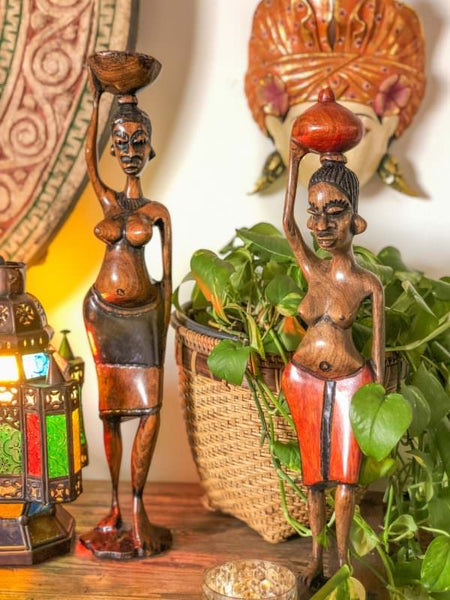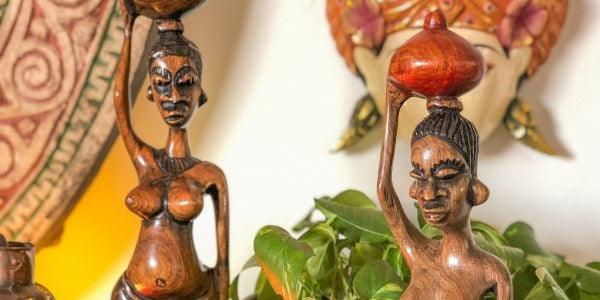The aesthetics that structure ethnic arts are enriching references to the cultural history of different ethnicities or social constructions around the world. If they do not appear in the exhibited environments as works of art showing the remnants of an ethnic group at a given time, they only transcend the original function (utilitarian or ritualistic) adding the decorative with aesthetic values to grant originality to the interior decoration .
Figurative or non-representational arts ( abstract arts ) make room for new generations of craftsmen to present their perspectives on their ancestry with ethnicity , carving the cultural identity in wood together with the stylistic and technical development provided by the interculturality of the modern world.

Figurative arts such as African sculptures display the ethnicity of Guinea-Bissau.
Handmade decorative sculptures make a significant contribution to displaying the beauty and richness of the ethnic diversity present in different countries such as Indonesia , Peru , Egypt , Turkey with an emphasis on those from Africa , America and Asia - demystifying the idea that the ethnic concept is homogeneous, does not include popular art and encompasses everything that escapes western culture .
The decorative nature of ethnic arts is centered on information. Stylized or realistic lines adorned with artistic paintings make up the images of pieces that convey everyday life and beliefs that form immaterial culture in interior design as decorativeness , making the environment visually and conceptually more attractive.

Ethnic style is as heterogeneous as ethnic diversity around the world.
Textile articles and accessories such as rugs , blankets , cushion covers , wall masks and decorative necklaces are the most popular handicrafts when the ethnic theme comes into play. The rustic style of the natural materials made by hand create a contrast in the environment, highlighting the authenticity and natural charm of the decorations among furniture and contemporary decorative objects.
Wood sculptures are true ethnic jewels, imprinting personality in the decoration of the environment. Unique creations of Balinese art that present local clothing improved with aged finishes or traces of African culture enhanced in plastic arts with carved wood that result in unique figurines from Guinea-Bissau imply that the essence of ethnic decoration is the cultural value that each art sustains.

Sculptures imprint the cultural value of the group they represent on the ethnic decoration.
Ethnicity in decoration is not restricted to certain artistic works or styles. He talks about diversity , the collective and belonging - which, through material culture and decorative art, brings a bit of the world into the home. And even if the piece does not express the history of our culture , it is possible to have the feeling of being connected to something bigger, that we cannot measure with cultural differences and geographic limits.
Once again we arrive at the perspective that art takes us out of the ordinary and that in ethnic decoration it takes us even further by showing that a small detail of a sculpture makes a little more of the world fit in us and in the environment .

Ethnic art takes us out of commonplace and connects us with cultural richness.
Let yourself be enchanted by enriching pieces from different countries available in our online store and share with us what characteristic of ethnic art inspires you!
Namaste!
Milene Sousa - Art & Tune













